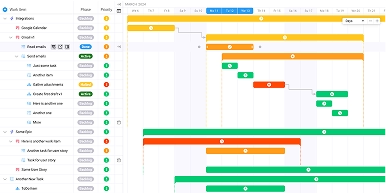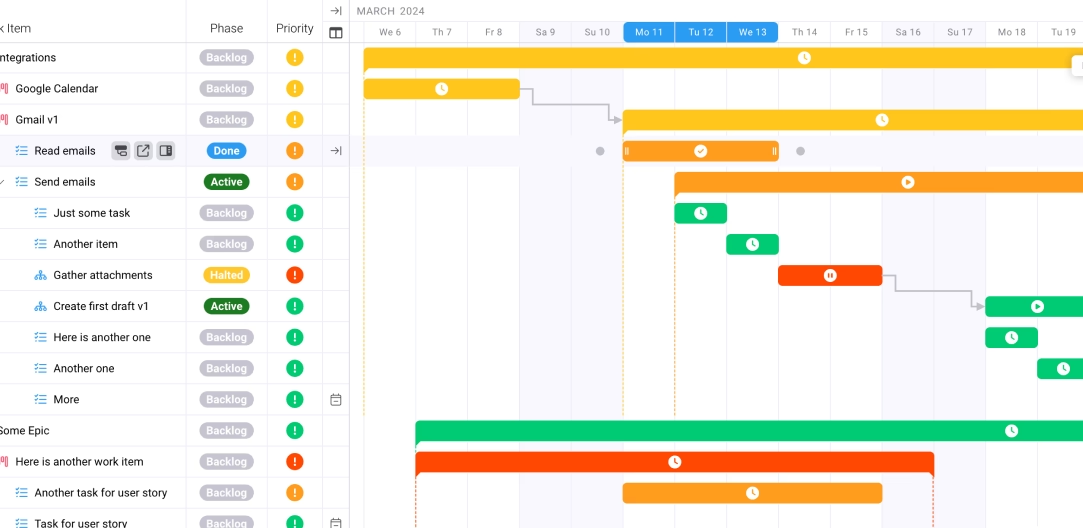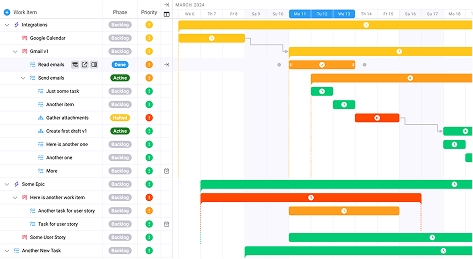
Best Competitive Analysis Marketing Tactics for Growing Marketing Agencies
Key takeaways:
- Strategic Frameworks Drive Results: Agencies using structured competitive analysis marketing methodologies outperform competitors by identifying market gaps and positioning opportunities that others miss.
- Data-Driven Intelligence Wins: 83% of marketing leaders now consider demonstrating ROI as their top priority, making competitive benchmarking essential for proving value and securing client retention.
- Technology Accelerates Advantage: Modern competitive analysis marketing tools and AI-powered insights enable agencies to monitor competitors in real-time and adapt strategies faster than ever before.
- Implementation Beats Information: The most successful agencies don’t just gather competitive intelligence—they translate insights into actionable tactics that directly impact client acquisition and revenue growth.
In 2025, understanding the wider context within which clients operate is critical to success for agencies, yet many marketing agencies still approach competitive analysis marketing with outdated methods that leave them vulnerable to more agile competitors. While traditional agencies scramble to copy surface-level tactics, the most successful firms are using systematic competitive analysis marketing frameworks to uncover deep strategic insights that drive exponential growth. The truth is, 69.6% of marketing agencies identify new business sales as their most challenging aspect of the sales pipeline, and the agencies winning these battles aren’t just working harder—they’re leveraging competitive analysis marketing to work smarter than everyone else.
The Current Challenge: What’s Broken in Traditional Competitive Analysis Marketing
The marketing agency landscape is experiencing unprecedented disruption. The global digital marketing agency service market is expected to hit USD 60.23 billion by 2033 with a CAGR of 14.33%, creating both massive opportunities and intensified competition. However, most agencies are still using competitive analysis marketing approaches that worked a decade ago but fail spectacularly in today’s fast-moving digital environment.
Traditional competitive analysis marketing typically involves sporadic manual research—checking competitor websites quarterly, taking screenshots of their campaigns, and making superficial observations about pricing strategies. This reactive approach leaves agencies constantly playing catch-up while missing critical market shifts and emerging threats.
Creative and marketing agencies that fail to adapt to changing market conditions risk losing clients to more agile competitors. The challenge isn’t just about staying informed; it’s about transforming competitive intelligence into sustainable competitive advantages.
The Hidden Costs of Inadequate Competitive Analysis Marketing:
Modern agencies face a perfect storm of challenges that make sophisticated competitive analysis marketing not just beneficial, but essential for survival. Client expectations have skyrocketed while budgets have tightened, forcing agencies to prove value more rigorously than ever before.
61% of marketers still rely at least in part on third-party data, but 38% no longer use third-party data at all, creating a fragmented landscape where agencies must develop first-party intelligence capabilities to maintain competitive insights. This data uncertainty makes systematic competitive analysis marketing frameworks even more critical for maintaining strategic clarity.
The proliferation of digital channels has also made competitive monitoring exponentially more complex. Where agencies once needed to track competitors across a handful of traditional media channels, today’s competitive analysis marketing must encompass websites, social media platforms, paid advertising networks, content marketing efforts, email campaigns, influencer partnerships, and emerging digital touchpoints.
The Strategic Framework: A Systematic Approach to Competitive Analysis Marketing
The most successful agencies in 2025 aren’t relying on ad hoc competitive research—they’re implementing systematic competitive analysis marketing frameworks that create sustainable competitive advantages. This strategic approach transforms competitive intelligence from a periodic activity into a continuous growth engine.
The RISE Framework for Competitive Analysis Marketing:
Research & Reconnaissance: Establish comprehensive competitor identification and monitoring systems that track both direct and indirect competitors across all relevant digital channels.
Intelligence & Insights: Deploy advanced analytical tools and methodologies to transform raw competitive data into actionable strategic insights.
Strategy & Synthesis: Convert competitive intelligence into specific tactical recommendations and strategic positioning opportunities.
Execution & Evolution: Implement competitive insights into client campaigns and agency operations while continuously refining the analysis process.
This framework addresses the core weakness in traditional competitive analysis marketing: the disconnect between gathering information and creating actionable value. Each phase builds upon the previous one, creating a systematic approach that generates compound benefits over time.
Establishing Your Competitive Intelligence Foundation:
The foundation of effective competitive analysis marketing starts with proper competitor identification and categorization. Most agencies make the critical error of focusing only on obvious direct competitors while missing indirect competitors who may be capturing their target audience through different approaches.
Direct competitors offer identical or highly similar services to the same target market. Indirect competitors solve the same customer problems but through different service offerings or approaches. Aspirational competitors represent the market leaders whose strategies and positioning set industry standards.
Competitor analysis tools like Semrush, Ahrefs, and Google Search Console help uncover who’s showing up for key terms, providing data-driven competitor identification that goes beyond surface-level assumptions. This systematic approach reveals the true competitive landscape and ensures no critical competitors are overlooked.
Implementation Tactics: Five High-Impact Competitive Analysis Marketing Strategies
Strategy 1: Real-Time Competitive Monitoring Systems
Modern competitive analysis marketing requires continuous monitoring rather than periodic snapshots. Digital marketing job growth is projected to increase by 6%, which is higher than the average job growth rate, indicating increasing demand for sophisticated digital capabilities that include competitive intelligence.
Implementing automated monitoring systems allows agencies to track competitor activities across multiple channels simultaneously. This includes website changes, content publishing schedules, social media campaigns, paid advertising strategies, and even hiring patterns that might signal strategic shifts.
The key is establishing trigger-based alerts that notify your team when competitors make significant changes. Rather than discovering competitive moves weeks or months later, real-time monitoring enables proactive responses that can neutralize competitor advantages or exploit their strategic gaps.
Strategy 2: Content Gap Analysis and Opportunity Mapping
Content marketing represents a massive opportunity for competitive differentiation in agency services. 49% of businesses say that organic search brings them the best marketing ROI, making content-driven SEO strategies critical for both agencies and their clients.
Comprehensive content gap analysis reveals topics, keywords, and content formats where competitors are either absent or underperforming. This creates clear opportunities for agencies to position their clients (and themselves) as thought leaders in underserved market segments.
Digital marketing trends insights for competitive advantage become particularly valuable when agencies can identify trend adoption gaps among competitors. Early adoption of emerging content formats, platforms, or topics can establish market leadership before competitors recognize the opportunity.
Strategy 3: Pricing Intelligence and Value Positioning
Pricing represents one of the most sensitive aspects of competitive analysis marketing, yet many agencies avoid systematic pricing intelligence due to the complexity of service-based pricing models. This creates a significant blind spot that more sophisticated agencies can exploit.
Advanced pricing analysis goes beyond published rate cards to understand the total value proposition competitors offer. This includes service inclusions, performance guarantees, contract structures, and additional value-adds that affect the true cost-benefit calculation for potential clients.
Understanding competitor pricing strategies enables agencies to position their services more effectively—either by demonstrating superior value at comparable price points or by identifying premium positioning opportunities where competitors are undervaluing their services.
Strategy 4: Client Acquisition Pattern Analysis
Studying how competitors acquire and retain clients provides insights that can dramatically improve agency business development efforts. This involves analyzing competitor case studies, testimonials, referral programs, partnership strategies, and marketing approaches to understand their client acquisition systems.
AI-driven marketing strategies transforming agency competitive analysis enable more sophisticated analysis of competitor client patterns, including industry focus, company size preferences, geographic concentration, and service package selections.
This intelligence helps agencies identify underserved market segments, develop more compelling positioning messages, and optimize their business development processes based on proven competitive approaches.
Strategy 5: Performance Benchmarking and Measurement Frameworks
Essential marketing KPIs for competitive benchmarking provide the foundation for measuring competitive performance and identifying improvement opportunities. However, most agencies struggle to obtain reliable competitive performance data beyond surface-level metrics.
Advanced benchmarking involves reverse-engineering competitor performance through multiple data sources and analytical techniques. This includes analyzing their content engagement rates, social media performance, website traffic patterns, and digital advertising effectiveness.
The goal isn’t just to match competitor performance but to identify specific areas where your agency can achieve superior results through different strategies or better execution.
Measuring Success: KPIs and Metrics That Matter
Effective competitive analysis marketing requires robust measurement frameworks that track both the quality of competitive intelligence and its impact on agency performance. Digital ads can boost how many people know about your brand by a staggering 80%, but measuring the competitive impact of marketing initiatives requires more sophisticated metrics.
Primary Competitive Analysis Marketing KPIs:
Intelligence Quality Metrics: Track the accuracy, timeliness, and actionability of competitive insights generated through your analysis frameworks. This includes measuring the percentage of competitive insights that lead to implemented tactical changes.
Market Position Indicators: Monitor your agency’s relative market position through share of voice analysis, competitive keyword rankings, content performance comparisons, and client acquisition rates versus identified competitors.
Revenue Impact Measurements: Quantify the direct revenue impact of competitive analysis marketing through win rate improvements, average deal size increases, and client retention enhancements attributable to competitive positioning strategies.
Response Time Analytics: Measure how quickly your agency can identify and respond to competitive threats or opportunities compared to industry benchmarks.
Client Value Demonstration: Track your ability to demonstrate superior value versus competitors through case studies, performance comparisons, and client satisfaction improvements.
The most sophisticated agencies develop custom dashboards that provide real-time visibility into competitive performance across all these dimensions. This enables data-driven decision making and continuous optimization of competitive strategies.
Advanced Measurement Techniques:
Beyond standard KPIs, leading agencies employ advanced measurement techniques that provide deeper insights into competitive dynamics. This includes sentiment analysis of competitor client feedback, predictive modeling of competitive moves, and market share estimation through multiple data triangulation methods.
These advanced measurements enable agencies to anticipate competitive threats before they fully materialize and identify emerging opportunities while they’re still accessible. The result is more proactive strategic positioning rather than reactive tactical responses.
Future Considerations: Emerging Trends and Next Steps
The competitive analysis marketing landscape continues evolving rapidly, driven by technological advances, changing client expectations, and new competitive dynamics. Agencies that want to maintain competitive advantages must anticipate and prepare for these emerging trends rather than simply reacting to them.
Artificial Intelligence and Automated Competitive Intelligence:
AI-powered competitive analysis tools are becoming increasingly sophisticated, enabling real-time monitoring and analysis that would be impossible through manual methods. These systems can process vast amounts of competitive data, identify patterns human analysts might miss, and generate predictive insights about future competitive moves.
However, the democratization of AI tools also means that competitive advantages from technology alone will be temporary. The agencies that will thrive are those that combine advanced technology with strategic thinking and superior execution capabilities.
Privacy Regulations and Data Access Changes:
Evolving privacy regulations continue to affect the availability of competitive intelligence data. Agencies must develop first-party data strategies and alternative intelligence gathering methods that comply with current and anticipated privacy requirements.
This shift is creating opportunities for agencies that can develop innovative, privacy-compliant competitive analysis marketing methodologies while their competitors struggle with data access limitations.
Integrated Competitive Positioning:
Future competitive analysis marketing will require deeper integration between competitive intelligence and all aspects of agency operations. This includes service development, pricing strategies, talent acquisition, technology investments, and client communication approaches.
The agencies that successfully integrate competitive insights into their operational DNA will achieve sustainable competitive advantages that competitors cannot easily replicate through tactical adjustments.
Global Market Expansion and Cross-Border Competition:
As digital marketing becomes increasingly global, agencies must expand their competitive analysis marketing beyond local or regional competitors. This requires understanding different market dynamics, cultural factors, and competitive landscapes across multiple geographic markets.
The complexity of global competitive analysis creates opportunities for agencies that can develop sophisticated, scalable intelligence frameworks while presenting significant challenges for those that cannot adapt their approaches.
To succeed in this evolving landscape, agencies should focus on building competitive analysis marketing capabilities that are both technologically advanced and strategically integrated. The goal is creating sustainable competitive advantages that compound over time rather than temporary tactical advantages that competitors can quickly neutralize.
The future belongs to agencies that can consistently identify, analyze, and act upon competitive intelligence faster and more effectively than their rivals. This requires systematic approaches, advanced technologies, and organizational capabilities that treat competitive analysis marketing as a core business competency rather than an occasional research activity.
Marketing agencies operating in 2025’s competitive landscape cannot afford to treat competitive analysis marketing as an optional or periodic activity. The systematic approaches, advanced tools, and strategic frameworks outlined in this guide provide the foundation for sustainable competitive advantages that drive agency growth and client success. By implementing these best competitive analysis marketing tactics, agencies position themselves not just to survive the increasing competition, but to thrive by consistently outmaneuvering their rivals through superior intelligence and strategic execution.
Frequently Asked Questions
What is competitive analysis marketing and why is it essential for agencies?
Competitive analysis marketing is the systematic process of researching, analyzing, and leveraging competitor strategies to improve agency positioning and client results. It’s essential because agencies need to understand market dynamics, identify opportunities, and differentiate their services in an increasingly crowded marketplace.
How often should marketing agencies conduct competitive analysis?
Modern agencies should implement continuous competitive monitoring rather than periodic analysis. Set up automated alerts for major competitive changes while conducting comprehensive quarterly reviews to identify strategic shifts and emerging opportunities.
What tools are most effective for competitive analysis marketing in 2025?
The most effective tools combine AI-powered monitoring (like Semrush, Ahrefs) with specialized competitive intelligence platforms (like Crayon, Kompyte) and social media monitoring tools. The key is integrating multiple tools into a comprehensive intelligence system.
How can small agencies compete with larger competitors through competitive analysis?
Small agencies can leverage competitive analysis to identify market gaps, develop specialized positioning, and respond more quickly to market changes than larger competitors. Focus on niche expertise and agile implementation rather than trying to match broad service offerings.
What metrics should agencies track to measure competitive analysis success?
Track intelligence quality metrics (accuracy, actionability), market position indicators (share of voice, keyword rankings), revenue impact measurements (win rates, deal size), and response time analytics to measure competitive analysis effectiveness.
How do privacy regulations affect competitive analysis marketing strategies?
Privacy regulations limit access to some traditional data sources, making first-party data strategies and privacy-compliant intelligence gathering methods more important. Focus on publicly available information, social media analysis, and direct customer research.
What’s the difference between competitive analysis and market research?
Competitive analysis focuses specifically on understanding competitor strategies, strengths, and weaknesses, while market research examines broader market trends, customer behavior, and industry dynamics. Both are important but serve different strategic purposes.
How can agencies use competitive analysis to improve client retention?
Use competitive insights to demonstrate superior value, anticipate client needs, identify service gaps, and provide strategic recommendations that help clients outperform their competitors. Regular competitive benchmarking reports can showcase agency value.
What are the biggest mistakes agencies make in competitive analysis marketing?
Common mistakes include focusing only on direct competitors, conducting analysis sporadically, gathering information without creating actionable insights, and failing to integrate competitive intelligence into strategic decision-making processes.
How should agencies present competitive analysis findings to clients?
Present findings as strategic opportunities rather than just information, focus on actionable recommendations, use visual dashboards for clarity, and tie insights directly to client business objectives and performance improvements.









